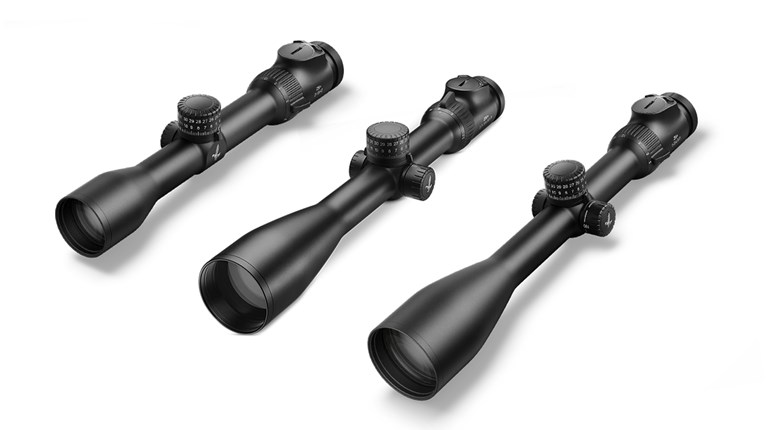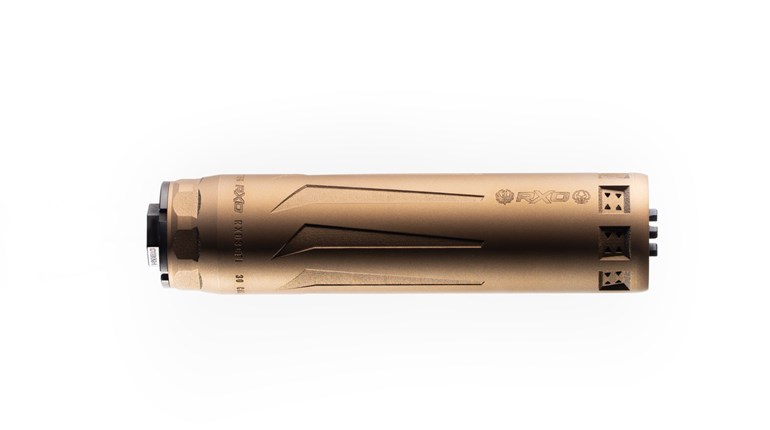
Now that you’ve presumably chosen your first rifle (which, if nothing else, means you’ve also chosen the caliber of ammunition you’ll be shooting), it’s time to pick out a riflescope to top it with. Iron sights certainly have their time and place, but unless the local regulations where you’re hunting require you to use them, we strongly recommend finding a scope to top off your prospective meat maker of a rifle.
Navigating the many riflescopes available today can be challenging even for seasoned hunters—so we’re going to keep this first purchase as simple as we can. Heck, a lot of folks would tell a first-timer to buy a 3x-9x power scope and call it a day, which isn’t bad advice! But we want you to leave here with a better understanding of why that’s a good idea. Take some time to consider the factors below, and you should leave the sporting good counter with a reliable first scope – and be one step closer to joining the hunt.
Budget
Let’s be honest, a big part of selecting any new piece of gear is determining just how much you're willing to spend. A good rule of thumb when selecting a scope is to spend just as much on it as you did on the rifle that it’s going to be paired with. If that’s not in your budget, don’t panic—plenty of critters are killed by rifles topped with $150 scopes each fall. But you do get what you pay for, and in many ways, your scope is going to make far more of a difference come crunch time than the rest of the overall package. After all, your rifle’s performance isn’t going to change in low-light conditions. Your scope, though? Different story, and it could make the difference between a successful harvest and a disappointing miss.
Point being: Take some time, work out a budget and spend what you can on a riflescope. Most, if not all, brands, offer some sort of lifetime warranty or guarantee, meaning that your scope should (so long as the company that builds it is doing things right) last a lifetime. Think of it as an investment, and spend accordingly.
Maintube, Objective Lens, Magnification and Reticle
Now that you’ve got a price point in mind, we’ll talk about four key characteristics of any riflescope: the maintube, the objective lens (that’s the one facing forward, mind you), the magnification/power and the reticle.
Given that we’re looking for your very first hunting riflescope, we’re going to focus on scopes with 1-inch and 30mm maintubes, very common sizes. When we say maintube, we’re talking about the body of your scope, and the measurement is its diameter. The key difference between a 1-inch tube and a 30mm tube is that the 30mm tube typically allows for more adjustment—which probably isn’t a concern for you at the moment. Keep things easy and start with a 1-inch maintube. If you do wind up with a 30mm scope for whatever reason (extra features, price, brand loyalty, etc.), just be mindful that it will naturally require 30mm rings/mounts.
What to purchase: A scope with a 1-inch maintube.
Objective lens is the next physical attribute to consider. You’re going to see a lot of variation here, as everything from 20mm objective lenses to 72mm objective lenses are available. They all have their use and place. For you, though, we’re going to keep this one easy: go with a 40mm or 44mm objective lens. They’re incredibly common, and they’ll handle any situation that you should find yourself in. Some folks might tell you that a larger objective lens will gather more light—that’s a half truth. A larger objective lens can do that, but whether or not that extra light ever reaches your eye has far more to do with the glass, coatings and other scope components that we’ll explain away on another day. A big honking objective lens on its own doesn’t guarantee anything, other than that your scope will be larger and heavier, things we’re trying to avoid with your first purchase.
What to purchase: A scope with a 40mm or 44mm objective lens.
When it comes to magnification, things are a little more open-ended. The magnification, or power, or your riflescope is best explained as a number corresponding to the size of an object while viewed at a distance through your scope, relative to its size when you look at it with your naked eye. For example: If you’re looking at a deer that’s 50 yards away on 5x power, it will look the same as it would at 5 yards without any magnification.
The magnification power you need depends entirely on you and what kind of hunting you’ll be doing. If you’re hunting from a treestand and don’t expect shots beyond 100 yards, you probably don’t need a lot of magnification. If you’re going to be spotting and stalking and potentially taking a long shot from a ridge, you may need to be able to up your game a bit. It all depends on your comfort level—and we can’t stress enough that, whatever power you choose, you need get comfortable shooting targets at all magnifications. There’s no guarantee a game animal is going to stand still while you settle in and dial up to 12x.
We’ll keep this easy. If you’re more of an eastern big-game hunter, start with a 3x-9x. If you’re going to be hunting more wide open spaces in the West, consider going up to a 4x-12x or 3x-15x. Know that they will probably cost a bit more, and aren’t technically necessary—just an option that’s on the table.
What to purchase: A 3x-9x or 4x-12x.
When it comes to reticle, we don’t feel there’s much room for debate if you’re a new hunter: the Duplex. A crosshair-style reticle that’s been the standard for decades, the Duplex reticle is incredibly common in hunting riflescopes. It’s simple and effective, and all you’ll need. For your second (or third) scope, we may talk about reticles with holdovers. Today is not that day. For that matter, go ahead and make it clear to your sales clerk that you want a Second Focal Plane, MOA scope with a Duplex reticle, and don’t take no for an answer.

Bookmark this explanation of focal planes and this breakdown of MOA/MIL for a later date.
What to purchase: A duplex reticle.
Conclusion
Choosing your first hunting riflescope can be as simple or as complicated as you want to make it. There’s no shortage of optics manufacturers in the business, nor of available features. Once you’ve got a few hunting trips under your belt, there’s a whole wide world of riflescopes for you to explore. For now, though, set a budget, keep things simple and find yourself a rugged, reliable scope that should last a lifetime. With a little practice, we’re confident your shot will connect when the moment arrives.




































